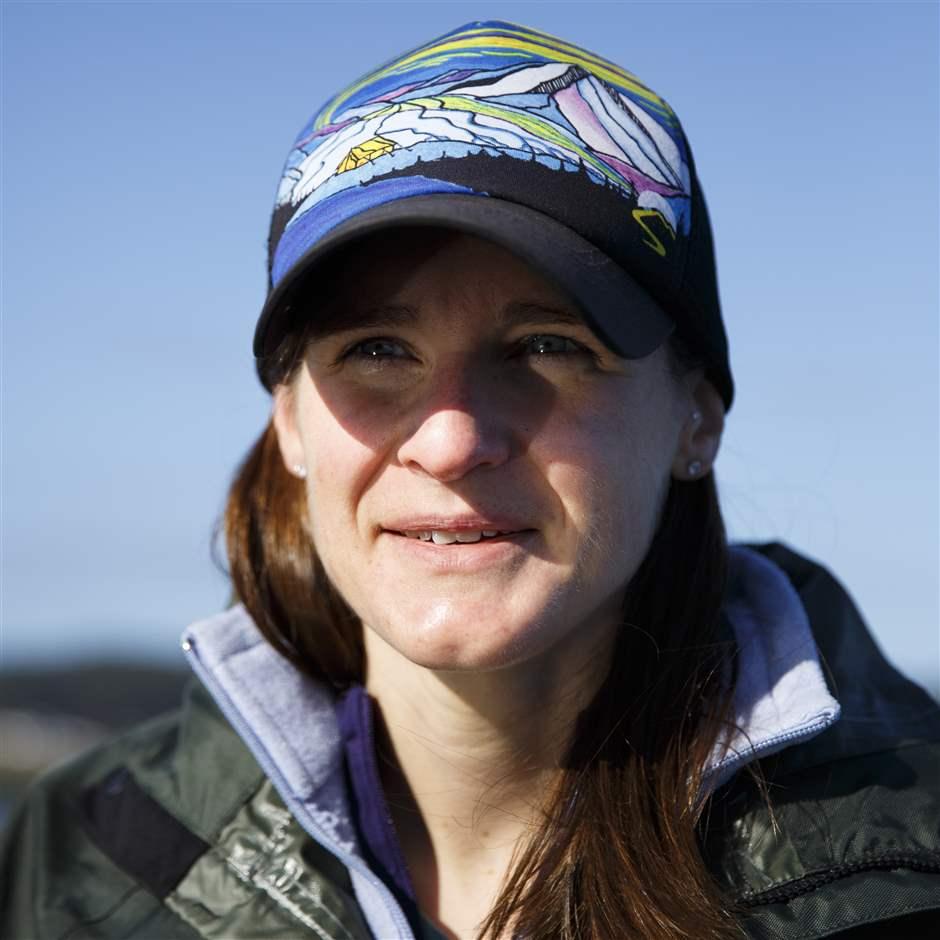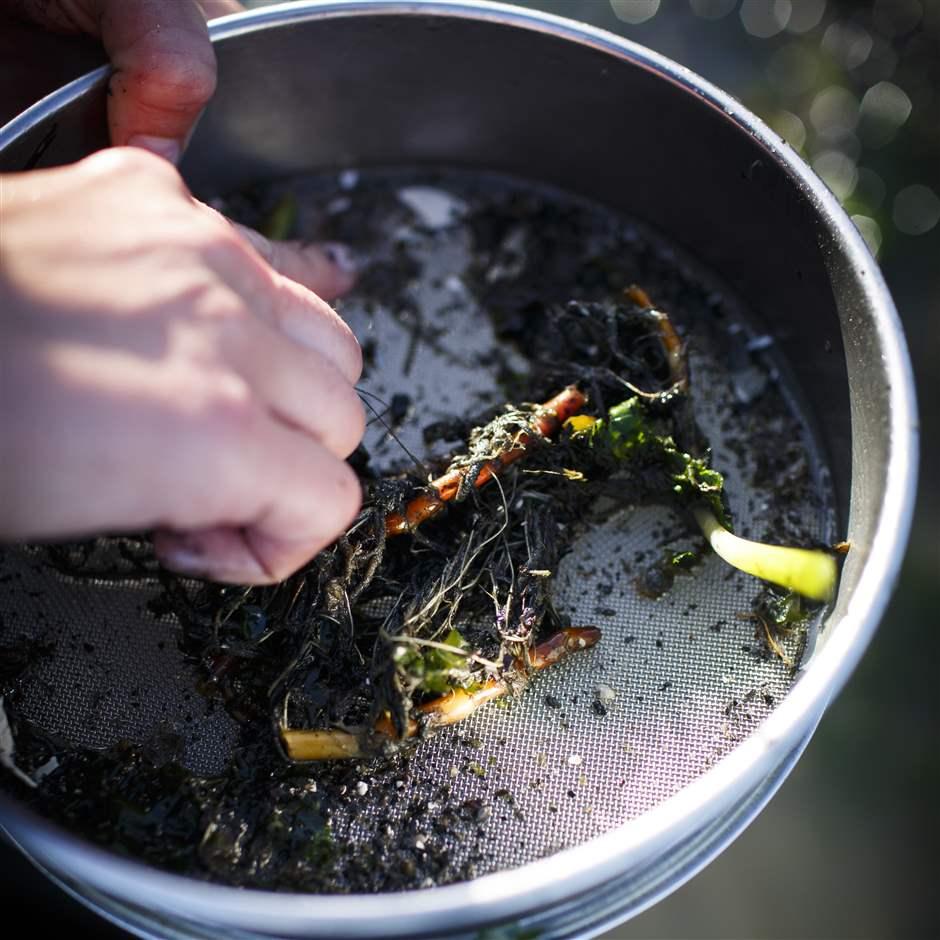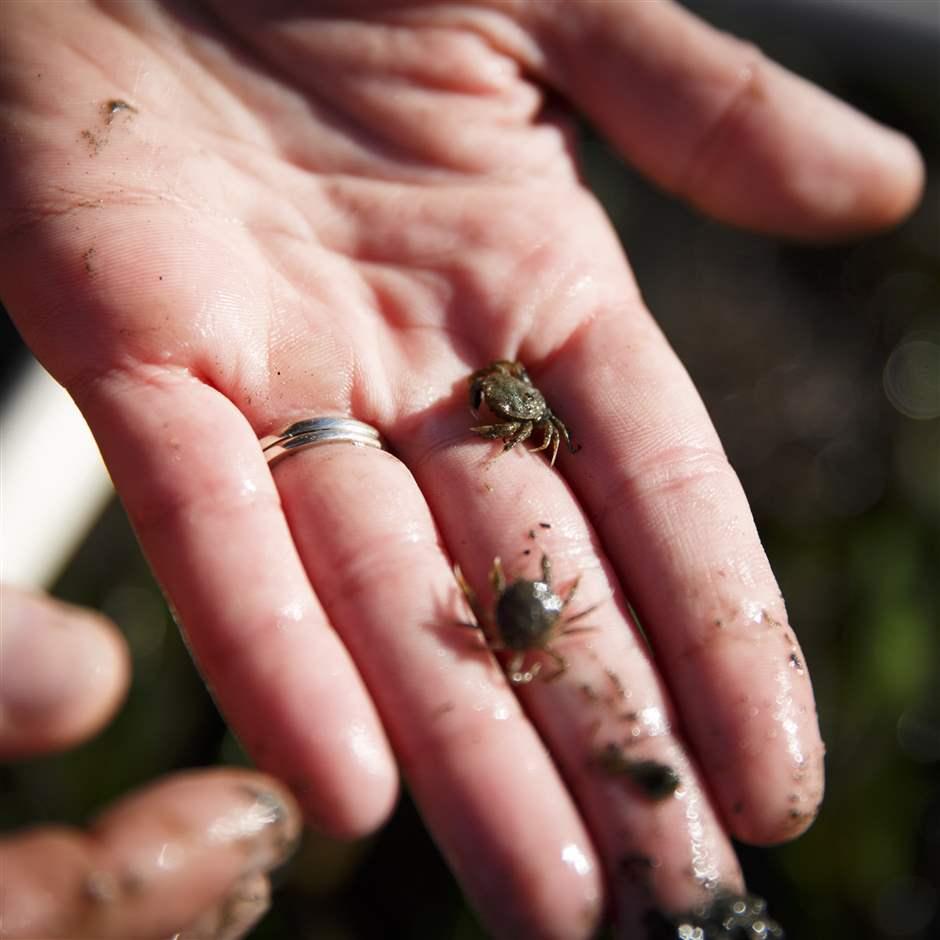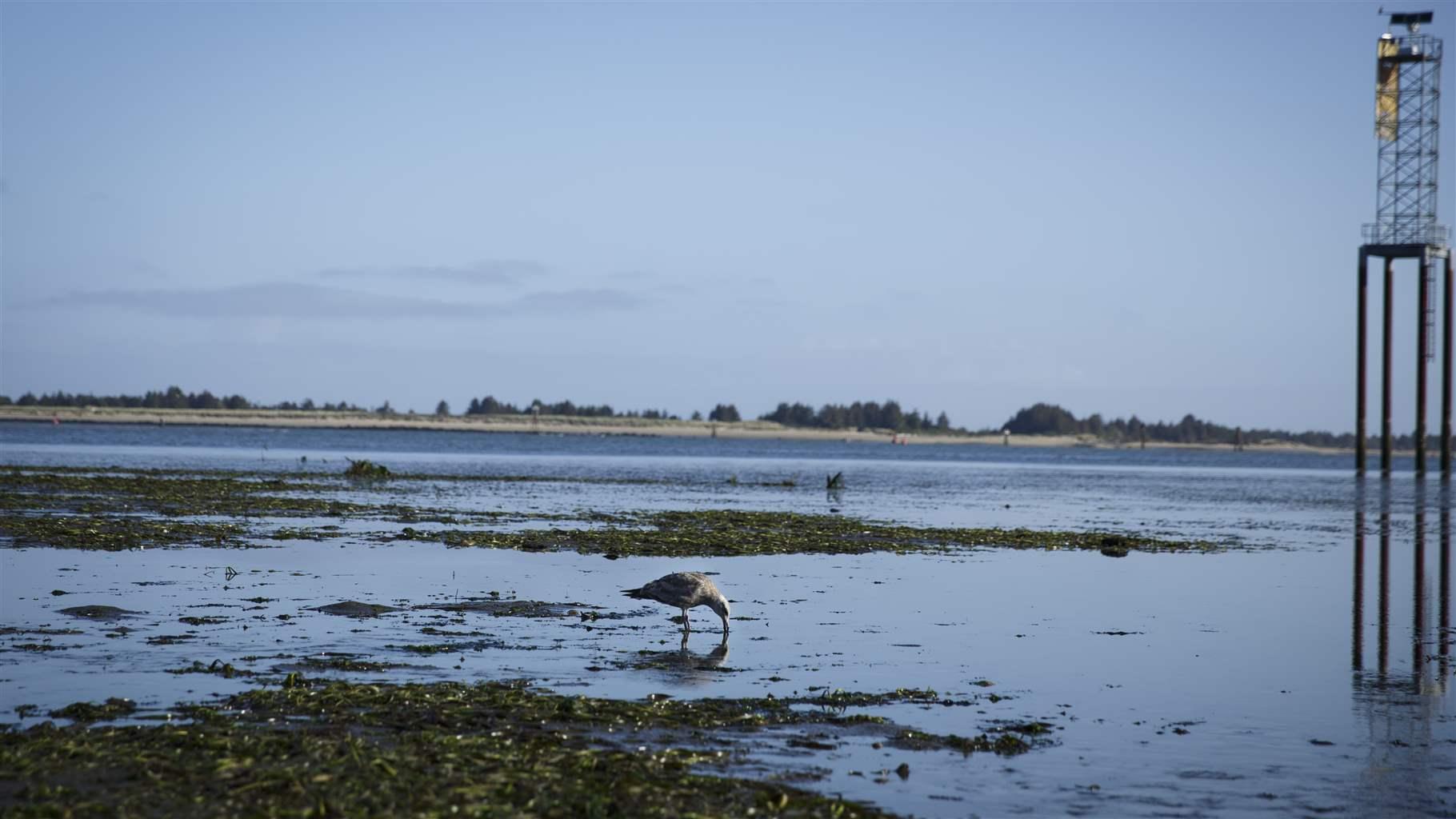Oregon’s Eelgrass Is Disappearing, With Potentially Big Impacts
Expert discusses vital role of marine plant—and the need to protect it
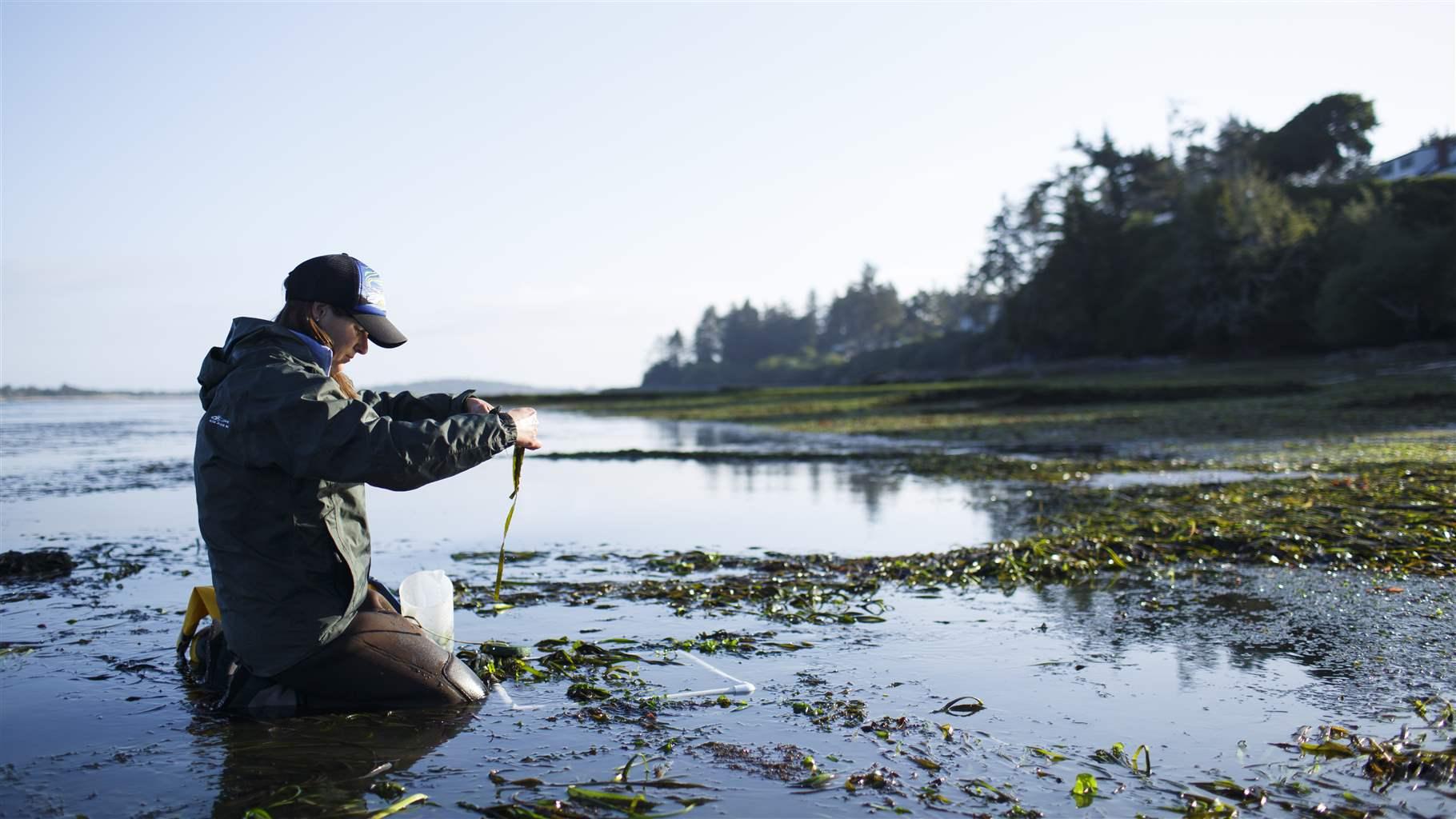
On many low-tide mornings, Caitlin Magel traverses the platinum-blue shallows of South Slough National Estuarine Research Reserve on Oregon’s south coast, counting silky shoots of eelgrass.
This underappreciated seagrass—one of the few flowering marine plants in the world—provides nursery habitat for crabs, salmon, and other wildlife that help support coastal fishing communities. Eelgrass also absorbs carbon and stores it in its shoots and roots. And by pulling carbon dioxide out of the water during photosynthesis, eelgrass also acts as a buffer against ocean acidification, says Magel, who is quantifying some of these benefits as part of her doctoral research at Oregon State University.
Since Magel started her Ph.D. work in 2016, however, eelgrass has inexplicably begun disappearing from some parts of Coos Bay, adding urgent new questions to her research.
The Pew Charitable Trusts caught up with Magel to learn more about what fascinates her about eelgrass and other things estuarine. This interview has been edited for clarity and length.
Q: What sparked your interest in coastal marshes and wetlands?
A: I was first exposed to salt marshes and seagrass ecosystems on the West Coast in 2008 during a National Science Foundation summer fellowship when I was an undergraduate.
Q: Why did you want to study eelgrass?
A: We know eelgrass provides a suite of ecosystem services—such as improving water quality and providing nursery habitat for fish. The more we can understand these services, the better chance that these areas can be protected—and restored where they’ve been lost.
Eelgrass and other seagrasses also can be an important source of blue carbon. When we measure carbon buried in sediment under seagrass beds, it’s quite high compared to the sediment outside the seagrass beds. I like the idea that this information could be useful for management of coastal ecosystems, particularly thinking about the effects of climate change and how we can mitigate the impacts or adapt to them.
Q: Why is South Slough an ideal place to study eelgrass?
A: Because it’s a national estuarine research reserve site, there are long-term datasets. And the wealth of the information will be really useful for understanding how things look now, how they will look in the future, and, if the future looks bleak, what can we do about it.
Q: Are you looking at eelgrass in any other estuaries?
A: I’m monitoring three other estuaries: Yaquina Bay and Netarts Bay in Oregon and Willapa Bay, Washington. But I have a more fine-toothed focus on Coos Bay/South Slough.
Q: Do you enjoy digging around in mudflats?
A: Yes, it’s rarely ever dull. I find crabs and nudibranchs and weird worms. And I love being outside in beautiful locations.
Q: What’s your most significant discovery?
A: I think discovering the decline of eelgrass in South Slough is the most interesting thing I’ve been involved in so far. And it’s happening in well-established eelgrass beds. We are in the process of figuring out what happened, why it happened, and what we can do about it. But one of the challenges is managing habitat in the face of rapid change. Once you notice the decline, it may be too late to stop it. It’s been a good lesson in the complexities of working in these kinds of systems.
Q: What are the most significant threats to eelgrass?
A: Dredging and other coastal development—putting in boat harbors or channels that tear out eelgrass beds or docks that shade eelgrass. Other environmental factors can harm eelgrass as well, such as sea level rise, warming ocean waters, eutrophication [an excess of nutrients causing harmful algae growth], and watershed disturbances, like logging, that release a lot of sediment into the water upstream from an estuary.
Q: Are you hopeful about the future of eelgrass?
A: I’m hopeful that by understanding the role of eelgrass we will be able to incorporate it into a more resilient future. I don’t think eelgrass and other seagrasses are going to be the thing that saves us from climate change. But I think they are part of the solution.
